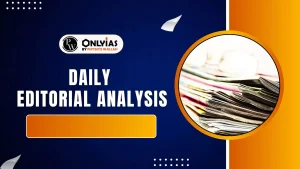As the world marks International Youth Day on 12 August, India stands at a critical juncture, possessing the world’s largest youth population, a phenomenon known as the ‘youth dividend’ or ‘demographic dividend’.
India and the Youth Dividend
- Definition of Youth Dividend: The youth dividend refers to a period when the working-age population (15–64 years) is large, and the dependency ratio is low, creating favourable conditions for rapid economic growth.
- More working individuals contribute significantly to the economy, increasing productive capacity and driving GDP growth
- Global Experiences
- Success Stories: Countries such as South Korea, Taiwan, and Ireland leveraged their youth dividend to add 2–3% to GDP growth over decades.
- Missed Opportunities: Regions like Latin America and North Africa failed to capitalise, leading to youth unrest, rising crime, and high unemployment.
- India’s Demographic Window: India’s demographic dividend began around 2005.
- It is projected to close between 2040 and 2045.
- India currently has 420 million youth aged between 15 and 29, representing 29% of its total population.
- This is an unprecedented demographic asset, but its benefit is not automatic; it requires strategic investment in skills, quality education, and job creation.
- Urgency for Action: India has only 15–20 years left to fully utilise this advantage. Failure to do so could result in a “youth disaster” with economic and social instability.
Challenges Hindering Youth Dividend Utilisation
- Poor Learning Outcomes and Inadequate Education: While India has made progress in educational access, with youth illiteracy at just 3% and 30% of youth completing graduation or higher education, the actual learning outcomes remain significantly poor.
- The World Bank’s ‘Learning Poverty’ report highlights that basic reading and numeracy are uncommon among 10-year-olds.
- The ASER survey indicates that half of Class 5 students cannot read a Class 2 text.
- Persistent Regional Disparities: The PRICE report reveals significant variations exist in educational attainment across states. States like Kerala and Tamil Nadu boast over 50% youth graduates, while Bihar, Madhya Pradesh, Rajasthan, and Uttar Pradesh have only 20-22%.
- This disparity forces youth from poorer states to migrate for low-quality jobs in other regions.
- Success Example: South Korea’s success in manufacturing stemmed from closing its rural-urban education gap within 15 years in the 1960s.
- Education-to-Employment Mismatch:
- Low Employability: A substantial portion of educated youth struggle to find jobs commensurate with their qualifications, leading to joblessness or underemployment.
- An National Sample Survey Office (NSSO) survey reveals that only 45% of graduates are considered “industry ready”.
- Public Sector Job Obsession: There is an overwhelming craze for public sector jobs, especially in regions with slow growth like Bihar and Uttar Pradesh.
- This leads to a severe supply-demand mismatch, resulting in frustration and protests among a large pool of aspirants.
- Employer Disconnect: Employers often point out the lack of essential as well as job specific skills such as soft skills, digital skills, and vocational skills, among candidates.
- Success Example: The Philippines successfully created 5 million jobs in its BPO sector within five years by providing mass-level English training to rural graduates, demonstrating what focused skilling can achieve.
Way Forward
- Reorient Education:
- Focus on Outcomes: Prioritise tangible learning outcomes over mere enrollment numbers.
- Universal Foundational Skills: Ensure universal foundational literacy and numeracy.
- Scale Up Vocational & Technical Education: Significantly expand access to vocational and technical training.
- Targeted Rural Interventions: Implement specific educational interventions in rural and economically weaker sections, akin to the Philippines’ English training initiative.
- Boost Employment Generation and Entrepreneurship:
- Incentivise Decentralisation: Provide incentives (e.g., tax breaks) to startups and MSMEs that establish offices or units outside metropolitan areas, fostering job clusters in Tier 3 and Tier 4 cities and rural regions.
- Regulate Gig Economy: Ensure fair wages and social security for workers in the gig economy.
- Reduce Inequality:
- Financial Aid & Mentorship: Offer financial assistance and mentorship to disadvantaged youth.
- Digital Skill Empowerment: Provide digital skills training to underprivileged youth.
- Promote Gender Equity: Increase female labour force participation, as girl education must translate into women being part of the workforce.
- Currently, women’s labour force participation is critically low at 25%.
- Leverage Digital Public Infrastructure: There is a need to effectively utilise India’s robust digital public infrastructure, such as Aadhaar, UPI, and DigiLocker, for skilling initiatives, fostering entrepreneurship, and promoting greater inclusion.
- Enhance Civic Engagement and Leadership: Involve youth directly in policy-making, establish youth councils, and implement participatory budgeting to cultivate civic sense and leadership.
Conclusion
India’s youth dividend window is closing fast, and inaction could lead to mass unemployment, social unrest, and brain drain, as seen during the Arab Spring. Urgent, concrete measures are needed to turn this demographic asset into a driver of national growth.
![]() 11 Aug 2025
11 Aug 2025

